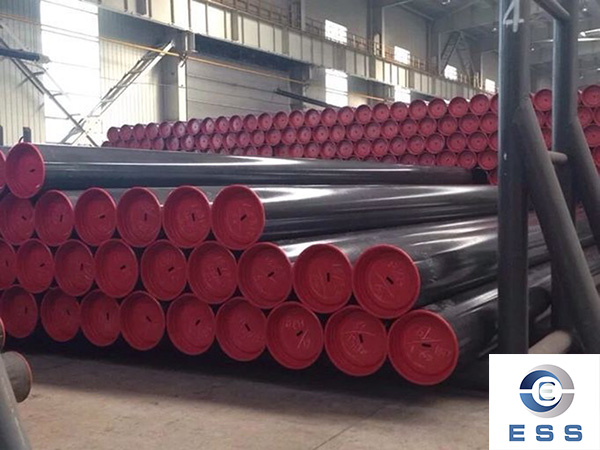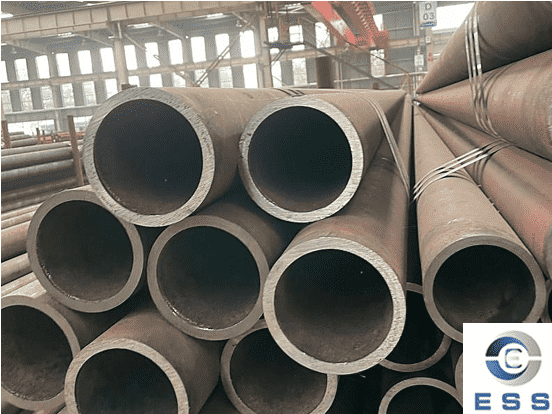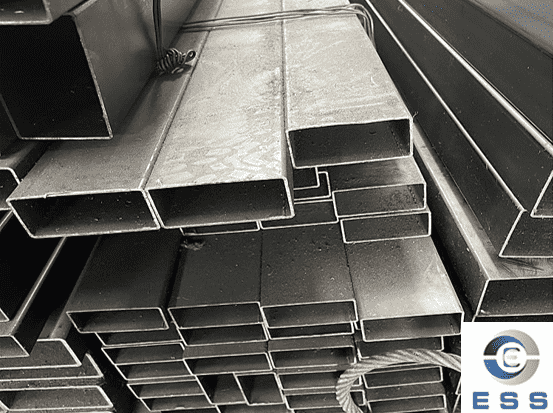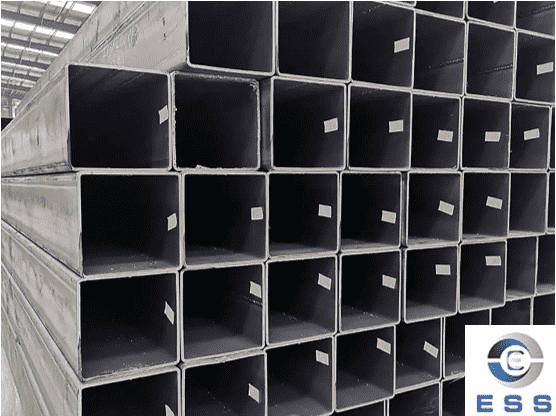Research on welding bars of ERW pipe
Steel pipes often need to be flattened, bent, punched, pressed, etc. in use. These processes have very strict requirements on the welding of our pipes. Let's first understand the process of pipe production.
High-frequency straight seam welded steel pipe is formed by rolling a certain specification of long steel strip into a round pipe through the front row of the pipe-making unit and welding it through high-frequency induction welding. The first half is called forming, and the second half is called sizing. . The style of the steel pipe can be round, square or special-shaped, which depends on the sizing and rolling after welding.
The main materials of welded steel pipes are: low carbon steel and low boron steel with σs≤300N/mm2, σs≤500N/mm2 or other steels. The influence of raw materials on the welding quality of steel pipes The main factors affecting the quality of raw materials are steel
There are three aspects: unstable mechanical properties of the strip, surface defects of the steel strip, and large deviations in geometric dimensions. Therefore, key controls should be carried out from these three aspects.

1) The influence of the mechanical properties of the steel strip on the quality of the steel pipe The commonly used steel grades for welded steel pipes are carbon structural steels, and the main grades are Q195, Q215, Q235 SPCC SS400 SPHC and so on. If the yield point and tensile strength of the steel strip are too high, it will be difficult to form the steel strip, especially when the pipe wall is thick, the resilience of the material is large, the steel pipe has a large deformation stress during welding, and the weld is prone to cracks. When the tensile strength of the steel strip exceeds 635 MPa and the elongation is lower than 10%, the weld seam of the steel strip is prone to cracking during welding. When the tensile strength is lower than 300MPa, the surface of the steel strip is prone to wrinkle due to the soft material during the forming process. It can be seen that the mechanical properties of materials have a great influence on the quality of steel pipes, and the quality of steel pipes should be effectively controlled from the aspect of material strength.
2) The influence of steel strip surface defects on the quality of steel pipes The common surface defects of steel strips include camber, wave shape, longitudinal shear and gnawing edge, etc. camber bend and wave shape generally appear in the rolling process of cold-rolled steel strip, and are Caused by improper control of the amount of reduction. During the forming process of the steel pipe, the sickle bend and wave shape will cause the deviation or overturn of the strip steel, which will easily cause lap welding of the weld seam of the steel pipe and affect the quality of the steel pipe. The gnawing edge of the steel belt (that is, the jagged and uneven phenomenon on the edge of the steel belt) generally occurs on the slitting belt, and the reason is that the disc blade of the slitting machine is blunt or not sharp. Due to the edge gnawing of the steel strip, there is a local lack of meat from time to time, which makes the steel strip prone to cracks and cracks during welding, which affects the stability of the weld quality.
3) The influence of the geometric dimensions of the steel strip on the quality of the steel pipe When the width of the steel strip is less than the allowable deviation, the extrusion force when welding the steel pipe is reduced, which makes the weld of the steel pipe weld weak, cracks or open pipes appear; when the steel strip When the width of the steel pipe is greater than the allowable deviation, the extrusion force when welding the steel pipe will increase, and welding defects such as sharp mouth, lap welding or burrs will appear at the weld of the steel pipe. Therefore, the fluctuation of the width of the steel strip not only affects the accuracy of the outer diameter of the steel pipe, but also seriously affects the surface quality of the steel pipe. For steel pipes that require that the wall thickness difference of the same section does not exceed the specified value, that is, steel pipes that require a high degree of wall thickness uniformity, fluctuations in the thickness of the steel strip will transfer the allowable value of the excess thickness difference of the same coil of steel strip to the wall thickness difference of the finished steel pipe. , so that the thickness of a large number of steel pipes exceeds the allowable deviation and is scrapped. The fluctuation of the thickness not only affects the thickness accuracy of the finished steel pipe, but at the same time, due to the different thickness of the steel strip, the extrusion force and welding temperature of the steel pipe are unstable during welding, resulting in unstable weld quality when the steel pipe is welded.
In addition, due to the existence of interlayers, impurities, trachoma and other material defects inside the steel, it is also an important factor affecting the quality of the steel pipe. Therefore, before the steel strip is welded, it is necessary to check the surface quality and geometric dimensions of each coil of steel strip. If the quality of the steel strip does not meet the standard requirements, do not produce it to avoid unnecessary losses.
Read more: ERW Pipe Specifications and Models or Seamless pipe vs erw pipe













 Eastern Steel Manufacturing Co.,Ltd not only improve product production and sales services, but also provide additional value-added services. As long as you need, we can complete your specific needs together.
Eastern Steel Manufacturing Co.,Ltd not only improve product production and sales services, but also provide additional value-added services. As long as you need, we can complete your specific needs together.










